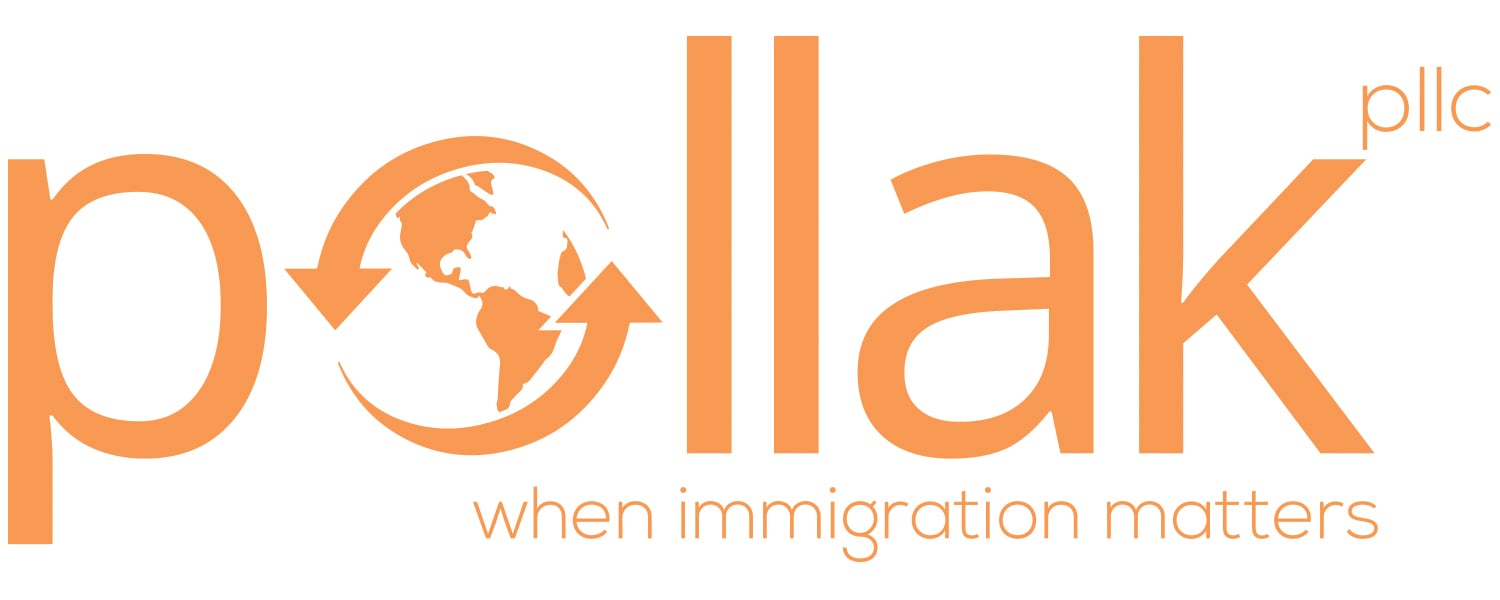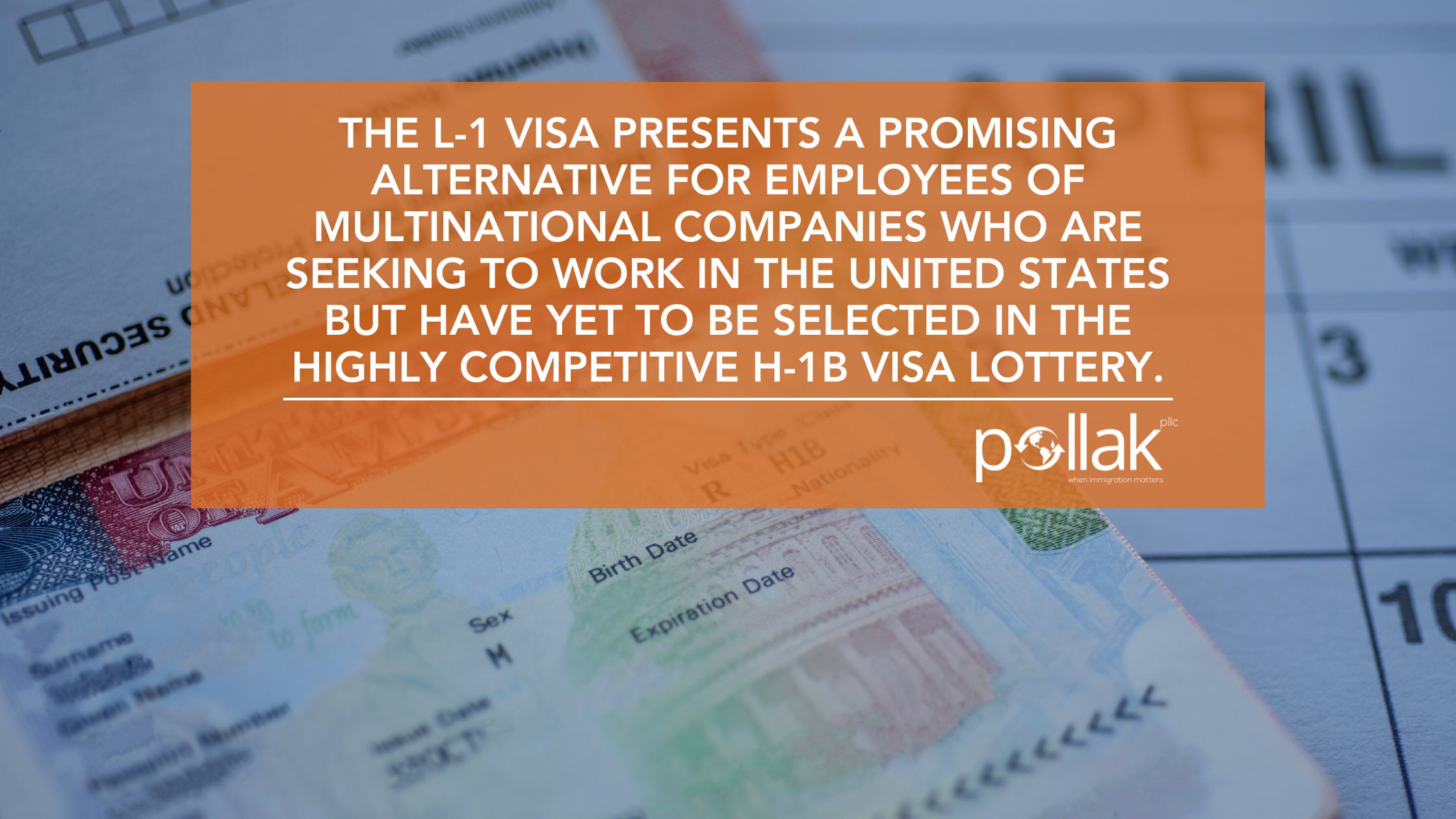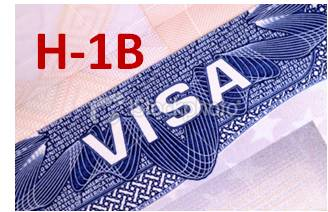 The L-1 visa presents a promising alternative for employees of multinational companies who are seeking to work in the United States but have yet to be selected in the highly competitive H-1B visa lottery. The H-1B program, capped annually by the U.S. Citizenship and Immigration Services (USCIS), often leaves many qualified applicants without a visa due to the limited number of slots available. For these individuals, the L-1 visa, which allows intracompany transfers, can be a strategic alternative worth considering.
The L-1 visa presents a promising alternative for employees of multinational companies who are seeking to work in the United States but have yet to be selected in the highly competitive H-1B visa lottery. The H-1B program, capped annually by the U.S. Citizenship and Immigration Services (USCIS), often leaves many qualified applicants without a visa due to the limited number of slots available. For these individuals, the L-1 visa, which allows intracompany transfers, can be a strategic alternative worth considering.
Overview of the L-1 Visa
The L-1 visa is specifically designed for employees of multinational companies who are transferring to a U.S. office. It is divided into two subcategories:
- L-1A Visa - This visa is for managers and executives. It is suitable for individuals who are transferring to the U.S. to take on a managerial or executive role within their company. The L-1A visa allows these professionals to bring their leadership and strategic skills to a U.S. branch or subsidiary of their employer.
- L-1B Visa - This visa caters to employees with specialized knowledge. It is designed for those who possess advanced knowledge of the company's products, services, processes, or proprietary technologies. These individuals are often key to the company's operations and innovation.
Eligibility and Application Process
For an employee to qualify for an L-1 visa, both the individual and the employer must meet specific criteria:
- Employee Criteria - The employee must have been employed by the multinational company for at least one continuous year within the three years preceding the application. The role they are transferring to in the U.S. must either be managerial/executive (L-1A) or require specialized knowledge (L-1B).
- Employer Criteria - The employer must have a qualifying relationship with the foreign entity, such as a parent company, branch, subsidiary, or affiliate. Additionally, the company must be actively conducting business both in the U.S. and at least one other country during the duration of the employee’s stay.
The application process starts with the U.S. employer filing Form I-129 with USCIS on behalf of the employee, along with the necessary fees. Upon approval, the visa applicant completes Form DS-160 and schedules an interview at a U.S. consulate. The L-1 visa process generally has a faster timeline compared to other work visas, and premium processing is available for those who need expedited handling.
Differences Between H-1B and L-1 Visas
It’s important to understand how the L-1 visa compares to the H-1B visa:
- H-1B Visa - This visa is for individuals with specialized skills, typically requiring at least a bachelor’s degree. The H-1B visa allows for a maximum stay of 6 years and provides some flexibility in changing employers. However, it is subject to an annual cap and lottery system, making it highly competitive.
- L-1 Visa - Unlike the H-1B, the L-1 visa is specific to employees transferring within the same multinational company and does not have a cap. The L-1A visa allows an initial stay of up to 3 years, with extensions possible up to 7 years. The L-1B visa allows an initial stay of 3 years, with extensions possible up to 5 years. The L-1 visa requires the employee to work exclusively for the sponsoring employer while in the U.S.
Exploring Your Visa Options
Given the challenges involved in meeting the eligibility requirements and the application process, both employees and employers must approach all visa applications with meticulous attention to detail. Pollak PLLC provides valuable guidance and ensures all criteria are thoroughly met, enhancing the likelihood of a successful visa application. For a free initial consultation, call (214) 305-2266.



